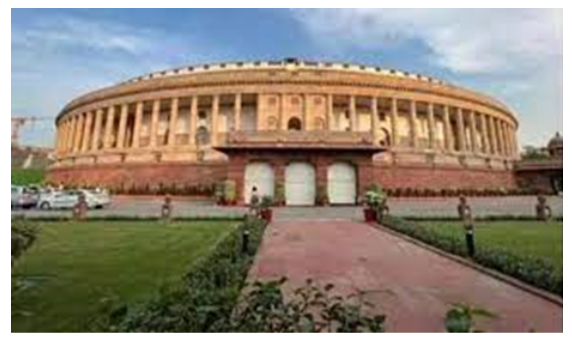Tuesday, 26th December 2023
China Restricts Export of Rare Earth Technologies
In News: China Prohibits Export of Rare Earth Metal Extraction Technologies in National Security Overhaul

Understanding Rare Earth Metals
- Rare Earth Metals comprise seventeen metallic elements, encompassing the fifteen lanthanides on the periodic table along with scandium and yttrium, sharing similar physical and chemical properties with the lanthanides.
- The seventeen Rare Earths include cerium (Ce), dysprosium (Dy), erbium (Er), europium (Eu), gadolinium (Gd), holmium (Ho), lanthanum (La), lutetium (Lu), neodymium (Nd), praseodymium (Pr), promethium (Pm), samarium (Sm), scandium (Sc), terbium (Tb), thulium (Tm), ytterbium (Yb), and yttrium (Y).
- These elements exhibit unique magnetic, luminescent, and electrochemical properties, making them integral to modern technologies spanning consumer electronics, computers, communications, healthcare, national defense, and clean energy.
- Even futuristic applications, such as high-temperature superconductivity and hydrogen storage for a post-hydrocarbon economy, rely on Rare Earth Elements (REEs).
- The nomenclature "rare earth" originated from the initial technological challenges in extracting them from their oxide forms.
Global Ramifications of Rare Earth Export Technology Ban
- Global Supply Chain Disruption
- China's position as the leading processor of rare earths means that the export ban could disrupt global supply chains across various industries.
- Nations heavily reliant on Chinese rare earth exports may face shortages or increased costs.
- Strategic Dependence
- The ban underscores the vulnerability of countries heavily dependent on China for critical materials.
- Relying on a single source raises concerns about supply security, prompting nations to explore alternative sources or domestic production.
- Opportunities for Innovation
- The ban may drive innovation and investments in alternative technologies and supply sources outside China.
- Countries could seek to diversify their rare earth supply chains, reducing dependence on a singular market.
Impact on India
- Supply Chain Diversification
- India, like many other nations, depends on Chinese rare earth exports.
- The ban offers an opportunity for India to reevaluate its dependence and explore diversification strategies.
- This could involve developing domestic extraction capabilities or establishing partnerships with other nations.
- Industrial Impact
- Industries in India relying on rare earth materials may initially face disruptions due to potential supply constraints.
- However, this situation could lead to investments in domestic production or collaborations with alternative suppliers to mitigate risks.
Way Forward
- China's rare earth technology export ban underscores the importance of diversifying global supply chains.
- Nations, including India, must strategically plan to secure essential resources for their industries and technological advancement.
- This involves exploring domestic production, fostering international partnerships, and ensuring resilience in the face of potential supply disruptions.
|
UPSC Previous Year Questions Prelims (2012) Q. Recently, there has been a concern over the short supply of a group of elements called ‘rare earth metals. Why?
Which of the statements given above is/are correct? (a) 1 only Ans: (c) |
Source: TH
Suspension of Members of Parliament
In News: In the winter session of Parliament 2023, a total of 146 Members of Parliament (MPs) has faced suspension.
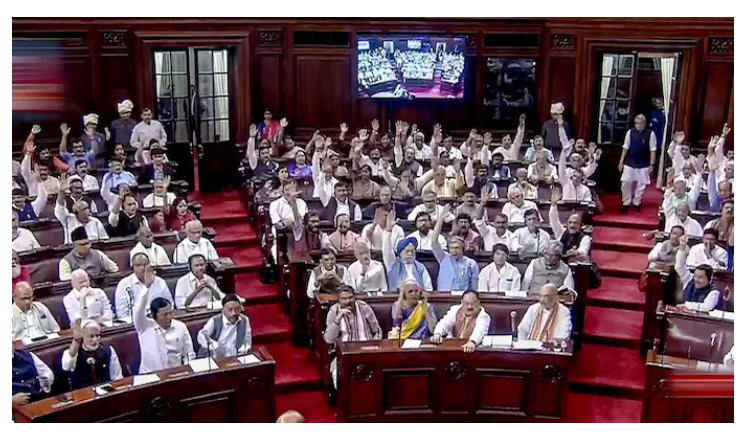
Why Do Members of Parliament Disrupt Proceedings?
Political analysis and statements from leaders identify four main causes leading to disruptions in Parliament:
- Time Constraints for Crucial Issues
- MPs may lack sufficient time to address vital matters.
- Government's Lack of Responsiveness
- Disruption can result from perceived government inaction.
- Intentional Disturbance for Political or Publicity Reasons
- Some parties intentionally disrupt for political gains.
- Failure to Take Immediate Action Against Disruptive MPs
- Lack of prompt action against MPs contributing to interruptions.
Authority to Suspend Members of Parliament
The Presiding Officer, i.e., the Speaker of Lok Sabha or Chairman of Rajya Sabha, holds the responsibility to maintain order and has the authority to suspend members.
Rules Governing Suspension
- Rules of Procedure and Conduct of Business of Lok Sabha
- Rule 373 allows the Speaker to direct immediate withdrawal for disorderly conduct.
- Rule 374 permits naming a member, leading to suspension for the session.
- Rules of Procedure and Conduct of Business of Rajya Sabha
- Rule 255 empowers the Chairman to direct immediate withdrawal for gross disorderliness.
- Rule 256 allows naming and suspension for the session through a House motion.
Drawbacks of MP Suspensions
While a measure to maintain order, MP suspensions in Parliament have drawbacks:
- Curbing Representation and Accountability
- Limits elected MPs' voice and accountability to constituents.
- Reducing Debate Quality
- Diminishes the quality and scope of legislative debate and discussion.
- Undermining Opposition Role
- Weakens the opposition's constructive role in parliamentary processes.
- Creating Trust Deficit
- Fosters distrust and animosity between ruling and opposition parties.
- Eroding Cooperation
- Undermines cooperation and consensus-building crucial for a healthy democracy.
- Setting a Bad Precedent
- Encourages potential misuse of power by the majority party.
- Violating Democratic Norms
- Contravenes parliamentary democracy norms, weakening the institution.
- Threat to Federal Structure
- Poses a threat to the federal structure and diversity by impacting MPs from various regions and parties.
Forward Steps
- Responsive Government Actions
- Encourage timely government responses to opposition concerns.
- Strengthening Presiding Officers' Role
- Empower presiding officers to maintain discipline, imposing stricter penalties for rule violations.
- Promoting Dialogue and Consensus
- Advocate for constructive dialogue over confrontation and disruption.
- MP Awareness and Accountability
- Enhance MPs' awareness of constitutional duties, fostering respect for parliamentary sanctity.
|
UPSC Previous Year Questions Prelims (2012) Q. Regarding the office of the Lok Sabha speaker, consider the following statements:
Which of the statements given above is/are correct? (a) 1 and 2 only Ans: (b) Exp:
Mains (2017) Q. The Indian Constitution has provisions for holding joint session of the two houses of the Parliament. Enumerate the occasions when this would normally happen and also the occasions when it cannot, with reasons thereof. |
Source: IE
Gelephu Smart City Project - Edukemy Current Affairs
In News: Bhutan's King has revealed plans for the Gelephu Project, a massive "international city" spanning 1,000 square kilometres along the border with Assam.
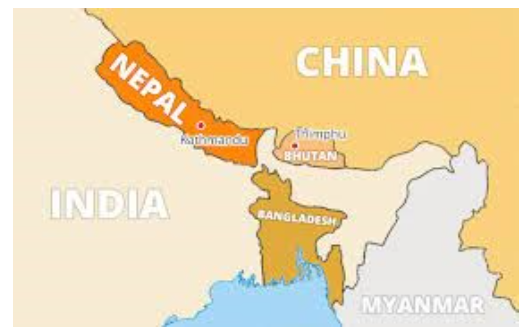
Key Highlights of the Gelephu Smart City Project
- Economic Corridor Connecting Regions
- The project aims to establish an economic corridor linking South Asia with Southeast Asia through India's northeastern states.
- Environmental Sustainability and Quality Investment
- The city plans to prioritize environmental standards and sustainability, attracting quality investments from specially screened international companies.
- Diverse Industry Focus
- The project envisions hosting "zero emission" industries, creating a "mindfulness city" emphasizing Bhutan's strengths in tourism and wellness, alongside infrastructure development.
- Special Administrative Region for International Investment
- Gelephu is anticipated to function as a Special Administrative Region, operating under distinct laws to facilitate increased international investment.
- Transformational Impact on Bhutan and South Asia
- The project is positioned as a point of inflection and a transformative initiative for Bhutan and the broader South Asian region.
- India-Bhutan Railway Construction
- The Government of India commits to constructing the first India-Bhutan railway line to Gelephu, connecting it with roadways and border trading points into Assam and West Bengal.
- This railway will extend Bhutan's connectivity to Myanmar, Thailand, Cambodia, and Singapore.
Key Facts Related to Bhutan
- Geographical Location
- Bhutan is situated between India and Tibet, an autonomous region of China.
- It is a landlocked country.
- Capital City
- Thimphu serves as the capital city of Bhutan.
- Transition to Democracy
- Bhutan transitioned to a democratic country in 2008, following its first democratic elections. The King of Bhutan holds the position of Head of State.
- River System
- The primary rivers, including Torsa, Wong, Sankosh, and Manas, flow southward from the Great Himalayas, merging with the Brahmaputra River in India.
- The Manas River, the longest river in Bhutan, is a transboundary river between southern Bhutan and India.
- Government Structure
- Bhutan operates as a constitutional monarchy.
Source: TH
The Bharatiya Sakshya (Second) Bill 2023
In News: The Union Home Minister presented three updated Bills in the Lok Sabha to replace longstanding British-era criminal laws.

Overview of the Three Bills
Replacement of Existing Laws
- The three Bills aim to substitute the Indian Penal Code (IPC), 1860; the Code of Criminal Procedure (CrPC), 1973; and the Indian Evidence Act, 1872.
- Specifically, the Bharatiya Nyaya (Second) Sanhita Bill, 2023 replaces the IPC, the Bharatiya Nagarik Suraksha (Second) Sanhita, 2023 replaces the CrPC, and the Bharatiya Sakshya (Second) Bill, 2023 replaces the Indian Evidence Act.
Parliamentary Standing Committee Review
- Introduced in August, the Bills underwent scrutiny by a 31-member Parliamentary Standing Committee.
- Opposition MPs raised concerns about errors, lack of diversity in expert consultations, questioned the speed of introduction, and noted the bills were largely a replication of existing laws.
About the Indian Evidence Act 1872
- Purpose and Amendments
- Governs evidence admissibility in Indian Courts for civil and criminal proceedings.
- Amendments over time have aligned the Act with criminal reforms and technological advancements, such as the admissibility of electronic records in 2000.
Key Provisions of the Bharatiya Sakshya (Second) Bill 2023
- Admissible Evidence
- Legal proceedings allow only admissible evidence, classified as 'facts in issue' or relevant facts.
- The Bill covers two types of evidence: documentary and oral evidence.
- Police Confessions and Electronic Records
- Confessions to police officers are inadmissible, and confessions made in police custody require Magistrate recording.
- Admissibility of electronic records as evidence is defined, including provisions for information derived from an accused in custody.
Key Issues and Criticisms of the Bharatiya Sakshya (Second) Bill 2023
- Missed Opportunities
- Experts highlight a failure to address extensive over-criminalization and expanded police powers that enhance state control.
- Electronic Records Concerns
- Despite acknowledging the potential tampering of electronic records, the Bill lacks safeguards during investigations.
- Contradictions arise in the classification of electronic evidence as documents, potentially exempting them from certification.
- Police Custody and Recommendations
- Concerns are raised about facts discovered in police custody without adequate safeguards.
- Unincorporated Law Commission recommendations include the presumption of police responsibility for injuries in custody.
Source: TH
Namdapha Flying Squirrel - Edukemy Current Affairs
In News: After an absence of 42 years, the Namdapha flying squirrel (Biswamoyopterus biswasi) has been rediscovered in Arunachal Pradesh.
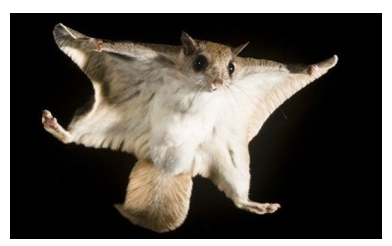
Understanding the Namdapha Flying Squirrel
- About
- The Namdapha flying squirrel is a rare nocturnal species residing in the Namdapha Tiger Reserve in Arunachal Pradesh, India.
- It can be differentiated from the red giant flying squirrel by the distinctive tuft of hair on its ears.
- Challenges in locating this species raised concerns about possible confusion with the red giant flying squirrel or, more critically, fears of extinction.
- Threats
- The Namdapha flying squirrel faces current threats from habitat loss and degradation due to activities such as clear-felling for human settlements, shifting agriculture, and the extraction of non-timber forest products, particularly rattan palm leaves used for roofing material.
- Protection Status
- Listed as Critically Endangered on the IUCN Red List.
- Designated under Schedule I of the Wildlife (Protection) Amendment Act, 2022.
Key Points About Namdapha Tiger Reserve
- About
- Declared the 15th Tiger Project of the country in 1983.
- Evolved from a Wildlife Sanctuary in 1972 to a National Park in 1983, ultimately becoming a Tiger Reserve under the Project Tiger initiative.
- The name "Namdapha" originates from the river that traverses the National Park, flowing from Daphabum (Dapha, meaning hill, and Bum, meaning peak of the hill) and meeting the Noa-Dehing river.
- Location
- Situated in Arunachal Pradesh, Namdapha Tiger Reserve lies between the Dapha bum range of the Mishmi Hills and the Patkai range.
- Climate
- Experiences a sub-tropical climate with mountainous regions having a mountain-type climate and low-lying plains and valleys featuring a tropical climate.
|
UPSC Previous Year Questions Prelims (2015) Q. Which one of the following National Parks has a climate that varies from tropical to subtropical, temperate and arctic? (a) Khangchendzonga National Park Ans: (d) Prelims (2013) Q2. Consider the following pairs:
Which of the above pairs is/are correctly matched? (a) 1 only Ans: (a) Exp:
|
Source: TH
Remarkable Surge in Case Disposal by the Supreme Court in 2023
In News: Supreme Court Achieves Significant Increase in Case Disposal in 2023, Surpassing New Case Registrations
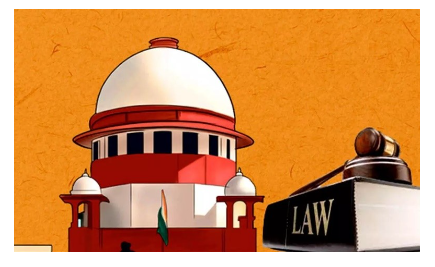
Factors Contributing to High Case Disposal
- Surge in Disposed Cases
- The SC resolved 52,191 cases from January 1 to December 15, 2023, exceeding the 49,191 cases registered during the same period.
- Role of Integrated Case Management Information System (ICMIS)
- The implementation of ICMIS in 2017 played a pivotal role in achieving record disposal numbers.
- Streamlined Filing-to-Listing Timeframe
- The Chief Justice of India reduced the filing-to-listing timeframe to five days, compared to the previous 10-day requirement, contributing to expeditious case listings.
- Prompt Processing of Specific Matters
- Matters related to bail, habeas corpus, demolition, and anticipatory bail were processed within a day, emphasizing the right to liberty.
- Formation of Special Benches
- Special Benches, including those addressing death penalty cases, were constituted to handle specific categories of cases efficiently.
Other Initiatives to Reduce Case Pendency
- e-Courts Initiative
- The Government of India initiated the e-Courts Integrated Mission Mode Project to computerize District and subordinate courts, leveraging technology to enhance access to justice.
- Fast Track Special Courts (FTSCs)
- Established to expedite trials for sexual offenses, particularly under the Protection of Children from Sexual Offences Act (POCSO Act), addressing delays in regular courts.
- Supreme Court Portal for Assistance in Court’s Efficiency (SUPACE)
- SUPACE, designed as a fact and law collection system, aids judges in decision-making by providing relevant information, contributing to the efficiency of the judicial process.
|
UPSC Previous Year Questions Prelims (2021) Q. With reference to the Indian judiciary, consider the following statements:
Which of the statements given above is/are correct? (a) 1 only Ans: (c) |
Source: TH
leprosy - Edukemy Current Affairs
In News: The Odisha government has recently announced the categorization of leprosy as a notifiable disease in the state.

Understanding Leprosy
- Introduction
- Leprosy, or Hansen’s disease, is a chronic infectious condition caused by Mycobacterium leprae bacteria.
- Primarily affecting the skin, peripheral nerves, upper respiratory tract mucosa, and eyes, it can lead to progressive disabilities if untreated.
- Prevalence and Characteristics
- Common in tropical and subtropical regions, leprosy is a neglected tropical disease found in over 120 countries.
- Occurs across all age groups, from childhood to old age.
- Transmission
- Spread through droplets from the nose and mouth.
- Prolonged, close contact with untreated leprosy patients is necessary for transmission.
- Casual contact, such as handshakes or sharing meals, does not facilitate transmission.
- Symptoms
- Incubation period of 3 to 5 years after exposure.
- Key symptoms include persistent skin sores, lumps, or bumps.
- Nerve damage may result in loss of feeling, muscle weakness, and mucous membrane issues in the nose.
- Treatment
- Curable with multidrug therapy (MDT).
- Early treatment prevents disability and halts transmission.
National Leprosy Eradication Programme (NLEP)
- Overview
- Central Health Scheme under the National Health Mission, Ministry of Health and Family Welfare, Govt. of India.
- Headed by the Deputy Director of Health Services (Leprosy) under the Directorate General Health Services, Govt. of India.
- Implementation
- States/UTs implement NLEP centrally formulated strategies and plans.
- Focus on early case detection, providing free treatment to prevent Grade II Disability (G2D) in affected individuals.
Source: IE
Pong Dam Wildlife Sanctuary - Edukemy Current Affairs
In News: The Union Ministry of Environment and Forests has issued a draft notification designating a one-kilometre area surrounding the Pong Dam Wildlife Sanctuary in Kangra district as an eco-sensitive zone.
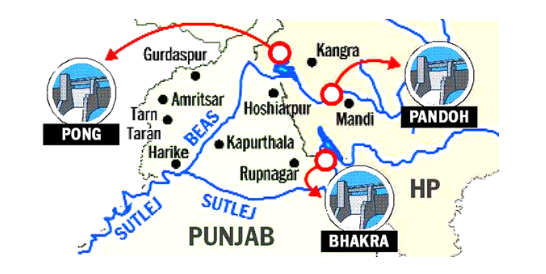
Pong Dam Lake Wildlife Sanctuary Overview
- Location
- Situated in Himachal Pradesh's Kangra district.
- Encompasses an area of nearly 307 sq. km.
- Formation
- Pong Dam Lake, also known as Maharana Pratap Sagar, results from the construction of Pong Dam on the Beas River in the Shivalik Hills' wetland zone.
- Declared a Wildlife Sanctuary by the Himachal Pradesh government in 1983.
- Significance
- Among Northern India's largest man-made wetlands.
- Home to a substantial population of migratory birds and various endemic species.
- Designated as a Ramsar Site in November 2002.
- Climate
- Sub-tropical climate characterizes the region.
- Flora
- Diverse tree species, including Acacia, Jamun, Shisham, Mango, Mulberry, Ficus Kachnar, Amla, and Prunus.
- Seasonal changes in water level limit extensive emergent vegetation.
- Fauna
- Wildlife includes Sambar, Barking Deer, Wild Bear, Nilgai, Clawless Otter, and Leopards.
- Rich avifauna such as Bar-headed geese, Pintails, common pochards, coots, Grebes, Cormorants, Herons, Storks, angle fowls, peafowl, grey partridges, and more.
Source: TT
Strait of Gibraltar - Edukemy Current Affairs
In News: Iran has issued a recent threat to block the Strait of Gibraltar and the Mediterranean Sea unless Israel ceases its bombardment of Gaza.

Overview of the Strait of Gibraltar
- Geographical Significance
- A narrow passage connecting Europe to Africa and linking the Mediterranean Sea with the Atlantic Ocean.
- Historically, it was the exclusive entry point to the Mediterranean until the Suez Canal opened in 1869.
- Borders
- Bounded by Spain and the British Overseas Territory of Gibraltar in the north.
- Southern borders include the African country of Morocco and the Spanish exclave of Ceuta.
- Geometric Dimensions
- Extends approximately 58 km in length with a width of about 13 km at its narrowest point.
- Depths range from 300 to 900 meters, forming a significant gap between the Spanish plateau and the Atlas Mountains of Northern Africa.
- Geological Formation
- Geological studies attribute the strait's formation to the northward movement of the African Plate toward the European Plate.
- Navigational Importance
- One of the world's busiest waterways, witnessing around 300 ship crossings daily, translating to roughly one ship every 5 minutes.
- Features the crucial Moroccan port of Tanger-Med, located near Tangier.
- Pillars of Heracles
- The strait's eastern end, situated between the Rock of Gibraltar in the north and Mount Hacho or Jebel Moussa in the south.
- These landmarks on the eastern extremity are collectively referred to as the Pillars of Heracles.
Source: TG
Addressing the Employment Challenge in India
In News: The article explores how India's employment challenge stems not only from the pandemic but also from the government's macroeconomic policies.
Types of Employment in India.
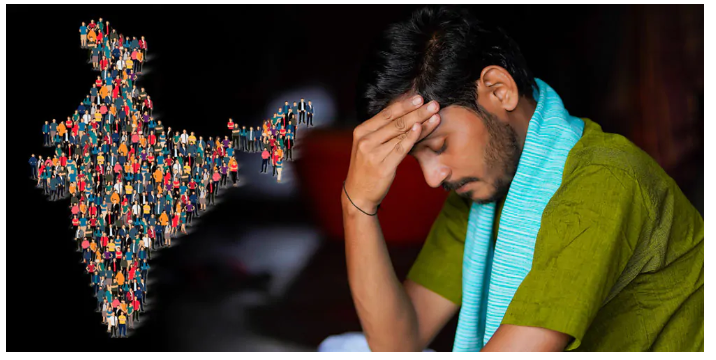
India's prevailing economic landscape features two primary types of employment:
- Wage Employment
- Regular Wage Jobs
- Formal positions in government organizations, private companies, and multinational corporations with fixed salaries.
- Casual or Daily Wage Labor
- Often found in sectors like construction, agriculture, and unorganized labour markets, characterized by variable income and job insecurity.
- Regular Wage Jobs
- Self-Employment
- Entrepreneurship
- Engagement in entrepreneurial activities, running small businesses or enterprises.
- Farmers
- Significant self-employment source, involving ownership and operation of farms.
- Freelancing and Informal Work
- Increasingly common in the gig economy, covering freelancers, consultants, and part-time roles.
- Entrepreneurship
Reasons behind Unemployment in India:
- Stagnant Employment Growth Rate
- Limited expansion in formal employment opportunities over the last four decades.
- Disguised Unemployment
- High levels of informal employment, including self-employed and casual wage workers, leading to disguised unemployment.
- Labour Demand Determinants
- Influenced by output demand and technology, with the introduction of labour-saving technologies reducing formal sector job opportunities.
- Policy Focus on Output Growth
- Traditional economic policies emphasizing GDP growth may not effectively address employment generation challenges.
- Lack of Responsiveness of Employment Growth Rate
- Disconnect between formal employment growth and changes in output growth rate, indicating jobless growth.
Jobless Growth in India:
- Weak Responsiveness of Employment to GDP Growth
- Jobless growth driven by automation and labour-saving technology, with the potential for increased employment through higher GDP growth
- High Responsiveness of Employment to GDP Growth
- India experiences a pronounced form of jobless growth due to the significant impact of labour-saving technologies on employment.
- Kaldor-Verdoorn Coefficient
- India's non-agricultural sector exhibits a higher Kaldor-Verdoorn coefficient, indicating a strong link between labour productivity and output growth.
Addressing Unemployment in India:
- Implement a National Employment Policy (NEP)
- Separate policy focus on employment alongside GDP growth, addressing both demand and supply components.
- Introduce an Urban Version of MGNREGA
- Urban employment safety net to create income security and public assets, modelled after the rural employment scheme.
- Increase Industrialization and Investment in Agriculture
- Rapid industrialization and increased agricultural investment to create more job opportunities.
- Diversify Agriculture and Promote Agro-Processing Industries
- Shift to horticulture, animal husbandry, and agro-processing for increased rural employment and income.
- Expand Education and Health Care
- Enhance human capital, generate employment, and improve competitiveness by expanding education and health care.
- Develop Rural Areas and Decentralize Development
- Rural development to reduce urban migration pressure, fostering more balanced growth and equitable distribution.
These measures aim to create a comprehensive strategy addressing various aspects of India's complex employment challenges.
|
UPSC Previous Year Questions Prelims (2013) Q. Disguised unemployment generally means (a) large number of people remain unemployed Ans: (c) Mains (2023) Q. Most of the unemployment in India is structural in nature. Examine the methodology adopted to compute unemployment in the country and suggest improvements. |
Source: TH
Share the article
Edukemy’s Current Affairs Quiz is published with multiple choice questions for UPSC exams
MCQ
Get Latest Updates on Offers, Event dates, and free Mentorship sessions.

Get in touch with our Expert Academic Counsellors 👋
FAQs
UPSC Daily Current Affairs focuses on learning current events on a daily basis. An aspirant needs to study regular and updated information about current events, news, and relevant topics that are important for UPSC aspirants. It covers national and international affairs, government policies, socio-economic issues, science and technology advancements, and more.
UPSC Daily Current Affairs provides aspirants with a concise and comprehensive overview of the latest happenings and developments across various fields. It helps aspirants stay updated with current affairs and provides them with valuable insights and analysis, which are essential for answering questions in the UPSC examinations. It enhances their knowledge, analytical skills, and ability to connect current affairs with the UPSC syllabus.
UPSC Daily Current Affairs covers a wide range of topics, including politics, economics, science and technology, environment, social issues, governance, international relations, and more. It offers news summaries, in-depth analyses, editorials, opinion pieces, and relevant study materials. It also provides practice questions and quizzes to help aspirants test their understanding of current affairs.
Edukemy's UPSC Daily Current Affairs can be accessed through:
- UPSC Daily Current Affairs can be accessed through Current Affairs tab at the top of the Main Page of Edukemy.
- Edukemy Mobile app: The Daily Current Affairs can also be access through Edukemy Mobile App.
- Social media: Follow Edukemy’s official social media accounts or pages that provide UPSC Daily Current Affairs updates, including Facebook, Twitter, or Telegram channels.



